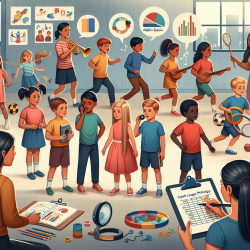Aircraft noise is a significant environmental concern, particularly for communities residing near airports. The research article "Aircraft noise and environmental equity in Montréal: A comparison of noise indicators and an analysis of the impacts of COVID-19" provides valuable insights into how different population groups are affected by aircraft noise in the Montréal census metropolitan area. This blog post will explore the key findings of this study and discuss how practitioners can leverage these insights to enhance their skills and advocate for further research in this field.
The Impact of COVID-19 on Aircraft Noise
The study highlights a significant reduction in aircraft noise exposure due to the COVID-19 pandemic. With air travel restrictions in place, there was a drastic decrease in air traffic, leading to a reduction in noise levels around major airports. For instance, the noise contour areas for various indicators like Lden (Day-evening-night noise level) and LAeq (A-weighted equivalent continuous sound level) saw reductions ranging from 66% to 77% between 2019 and 2020.
Environmental Equity and Vulnerable Populations
The research emphasizes the concept of environmental equity, focusing on how different groups—such as low-income individuals, visible minorities, children under 15 years old, and seniors—are affected by aircraft noise. The study found that visible minorities consistently experienced higher exposure to aircraft noise across different indicators and years. Interestingly, while there was a general reduction in populations exposed to high noise levels due to decreased air traffic, inequities persisted for certain groups.
Key Findings for Practitioners
- Noise Indicators Matter: The choice of noise indicators (cumulative vs. single-event) can significantly impact the assessment of environmental equity. Practitioners should consider using multiple indicators to gain a comprehensive understanding of noise impacts.
- Focus on Vulnerable Groups: The study highlights that visible minorities and seniors are particularly vulnerable to aircraft noise exposure. Practitioners should prioritize interventions that address these inequities.
- Advocacy for Policy Change: Given the variability in noise exposure across different population groups, there is a need for updated policies that incorporate diverse noise metrics to better protect vulnerable communities.
Encouraging Further Research
The findings underscore the importance of longitudinal studies that track changes over time and consider various noise metrics. Practitioners are encouraged to advocate for further research that explores the long-term impacts of aircraft noise on health and well-being, particularly among vulnerable populations.
To read the original research paper, please follow this link: Aircraft noise and environmental equity in Montréal: A comparison of noise indicators and an analysis of the impacts of COVID-19.










